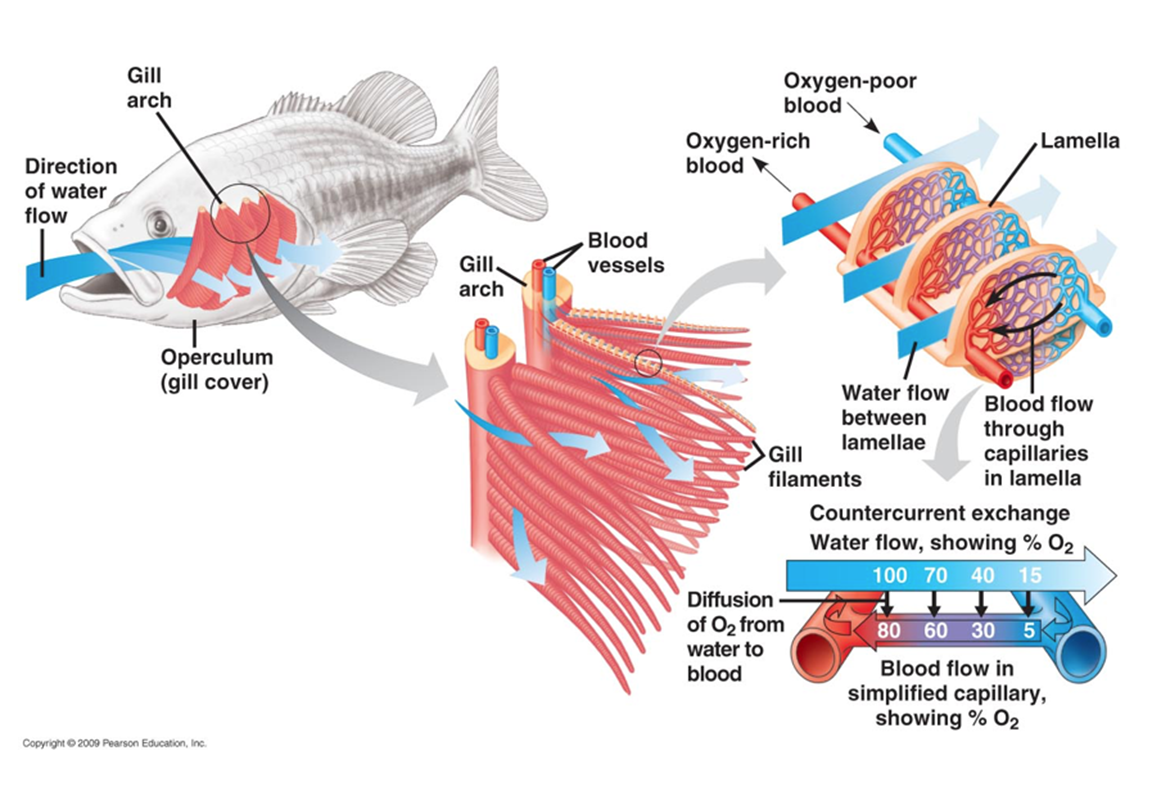Can you revive fish?
by Sascha Clark Danylchuk
FINSIGHTS #13 Can You Revive Fish?
I would guess that most anglers have heard of, if not performed, revival techniques for fish. If you haven’t, it’s the practice of holding fish into the current or moving them in the water before letting them go to help them get more oxygen and recover from the exhaustion of angling. When I first heard about this I was encouraged to move fish forward and backward in the water. This technique was soon replaced with an “only forward” or “figure-eight” method. But why and how have these techniques become part of our catch-and-release tool kit?
Just like us fish need oxygen, but unlike us they get it from water. On each side of the back of their throat most fish have four gill arches, which are curved, bony structures. Attached to each gill arch are two rows of filaments. Each filament has thousands of lamellae, which are like tiny plates and provide the surface for gas exchange. While water flows one way past the lamellae, blood flows in the opposite direction and this countercurrent exchange allows fish to absorb oxygen and expel carbon dioxide.
The important part of this to remember is that water needs to flow in one direction for fish to respire effectively: water goes in the mouth, over the gills, and out the operculum (gill cover).
Copyright © 2009 Pearson Education
If my description and the diagram still leave you confused check out this video:
https://www.youtube.com/watch?v=XEIRlw5rCUk
Based on this explanation of gill function, it seems completely logical that you could revive a fish after angling and help it get more oxygen by increasing the amount of water that flows over the gills, right? You wouldn’t be alone if you said yes; many websites, guides, anglers, and fishing organizations encourage anglers to revive fish like this prior to release.
But, how well do these techniques actually work? A couple of scientific studies give us insights into the effectiveness (or lack thereof) of such revival techniques.
Salmon in Rivers:
The first study was performed in a lab, but because labs aren’t always realistic enough the scientists also did a similar study in a natural setting, and it’s the latter study that I’m going to focus on here. Using Fraser River sockeye salmon caught with a seine net (a large, soft net that is commonly used as a non-angling way to capture fish) and via angling, the scientist examined whether assisted ventilation (facing fish into the current for one minute) after air exposure had any effect on the survival, movement, and ability of the fish to reach natal spawning grounds.
The scientists found no benefit of reviving fish when looking at movement and survival following release.
Bass and Trout in Lakes:
Here’s a pair of good sciencey words: lentic refers to still, fresh water such as a lake or pond. Whereas lotic refers to moving, fresh water as in a stream or river.
The third study examined largemouth bass and brook trout in lentic systems. The scientists compared three groups of angled and air exposed fish: group 1 fish were immediately released, group 2 fish were moved back and forth in the water for revival, and group 3 fish were moved in a circular or figure-eight motion for revival.
Jake Brownscombe photo.
As with the previous studies in lotic systems, the scientist found no benefit of either methods of revival for fish in lentic systems; neither form of assisted ventilation led to faster revival for largemouth bass and brook trout.
Why can’t you revive fish using these methods?
Despite the intuitiveness of revival techniques, these studies showed that they didn’t help fish. Why not? Here are a couple educated guesses from the authors and other experts:
• Holding fish causes them some stress regardless of what you are doing to them. Therefore, holding fish longer by trying to revive them counteracts any benefits they might receive.
• Most species of fish, including sockeye salmon, largemouth bass, and brook trout, can respire on their own by opening and closing their mouth and opercula. After angling, they typically do this and are already maximizing oxygen uptake. Anything we as anglers try to do to help them get more oxygen doesn’t actually make enough of a difference.
Why is this important for anglers?
Despite our best intentions, letting fish go as soon as possible is probably the best thing we can do for them. Any fish that can swim away should be released and doesn’t need to be revived. We probably are not harming fish by trying to revive them (none of the studies showed any detriment to fish that were revived), but we likely aren’t doing them any favors either.
Of course as with any rule of thumb, there could be a few caveats to this recommendation depending on the species of fish, situation, and location. For example, if a fish cannot swim away, reviving it could be beneficial. Similarly, in an area with predators it is possible that holding fish longer and reviving them gives them a better chance of escaping post-release predation attempts. But, more studies need to be done to assess these situations.
For now, the research suggests that there is no benefit to reviving fish, that we shouldn’t hold fish longer than necessary, and that letting them go when they are ready to go is ideal.
Happy Fishing!
Sascha Clark Danylchuk



